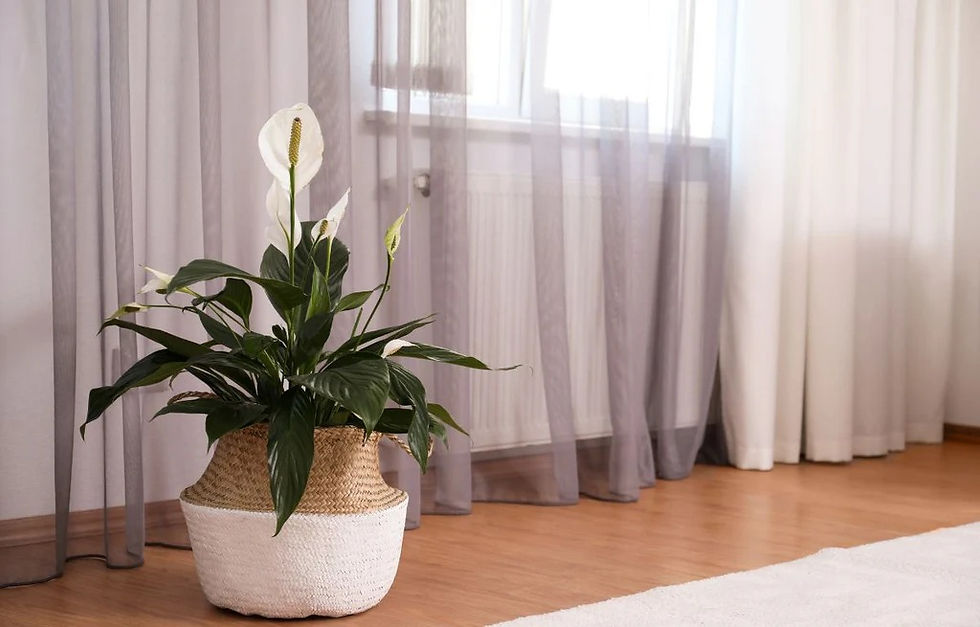How to Be More Environmentally Friendly with Leca®
- Norsag

- Jun 10, 2024
- 3 min read
Updated: Nov 14
As concerns about environmental sustainability grow, many people are seeking ways to reduce their carbon footprint and live more eco-friendly lives. One effective and innovative way to achieve this is by using Leca® (Light Expanded Clay Aggregate).

This versatile material offers numerous benefits for the environment, from reducing energy consumption to improving waste management. In this blog post, we'll explore how Leca® can help you be more environmentally friendly and contribute to a sustainable future.
What is Leca®?
Leca®, or Light Expanded Clay Aggregate, is a lightweight, porous aggregate made from natural clay. It is produced by heating clay to around 1,200°C in a rotary kiln, causing it to expand and form thousands of small, air-filled bubbles. The result is a lightweight, durable, and highly versatile material used in a variety of applications, from construction to horticulture.
Benefits of Leca® for the Environment
1. Sustainable Production Process
Leca® is produced from natural clay, which is abundant and sustainable. The manufacturing process involves heating the clay, but the energy required for this process is relatively low compared to the production of other building materials. Additionally, Leca® factories often utilize waste heat recovery systems, further reducing their energy consumption and carbon emissions.
2. Energy Efficiency in Construction
One of the primary uses of Leca® is in construction. Its lightweight and insulating properties make it an excellent choice for building materials. Structures built with Leca® blocks or incorporated Leca aggregates have better thermal insulation, reducing the need for heating and cooling. This leads to significant energy savings over the life of a building, which in turn reduces greenhouse gas emissions.
3. Water Management
Leca® porous nature makes it an excellent medium for water management. It is commonly used in green roofs, which help reduce stormwater runoff and improve urban air quality. The lightweight aggregates can retain water, reducing the need for irrigation in green roofs and

gardens. By promoting better water management, Leca® helps conserve water resources and reduce the impact of heavy rainfall on urban infrastructure.
4. Waste Reduction and Recycling
Leca® is an environmentally friendly material in terms of waste management. It can be used to treat and stabilize contaminated soils, reducing the need for landfills and the associated environmental impact. Additionally, Leca® is fully recyclable. At the end of its useful life, it can be crushed and reused in new construction projects or other applications, minimizing waste and the need for new raw materials.
5. Improved Soil Health
In horticulture, Leca® is used as a soil amendment. It improves soil structure, aeration, and drainage, promoting healthier plant growth. Unlike synthetic soil conditioners, Leca® is a natural product that doesn't introduce harmful chemicals into the environment. It can also be used in hydroponic systems, reducing the need for soil and the associated environmental impact of soil-based agriculture.
6. Carbon Sequestration
Leca® can contribute to carbon sequestration efforts. When used in green roofs and urban landscaping, it supports plant growth, which in turn captures carbon dioxide from the atmosphere. By incorporating Leca® into urban green spaces, we can help mitigate the urban heat island effect and improve air quality.
Practical Tips for Using Leca®
1. Incorporate Leca® in Home Construction
If you're planning a new build or renovation, consider using Leca® blocks or aggregates. They provide excellent insulation, reducing your home's energy consumption and carbon footprint.

2. Use Leca® in Your Garden
Leca® can be used in garden beds, pots, and planters to improve drainage and soil health. It’s especially beneficial for plants that require well-drained soil.
3. Implement Green Roofs
If you have the opportunity, consider installing a green roof with Leca® aggregates. It will help manage stormwater, insulate your building, and create a green space that benefits the environment.
4. Support Leca® Recycling
If you are involved in construction or demolition, ensure that Leca® materials are recycled rather than discarded. Many recycling facilities can process Leca®, reducing waste and promoting sustainable building practices.
Leca® is a versatile and environmentally friendly material that offers numerous benefits for sustainable living. By incorporating Leca® into construction, gardening, and water management practices, you can reduce your environmental impact and contribute to a more sustainable future. Whether you're a homeowner, gardener, or builder, exploring the potential of Leca® can help you make greener choices and support a healthier planet.




Comments